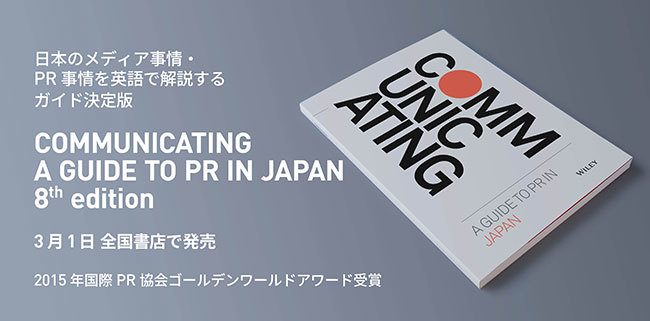Struggling to explain Japan's communication landscape
Japan is the world's third-largest economy. Inbound demand continues to expand ahead of the 2020 Olympics and Paralympics. Despite being a global market economically, its communication landscape differs significantly not only from Western countries but also from other Asian nations like Singapore and Hong Kong.
For foreign companies, depending on how long they've been in Japan, PR staff from headquarters sometimes try to implement the same methods and mindset used in their home country directly in Japan. They might also say, "We do it this way in Hong Kong and Singapore, so we should do the same in Japan."
PR personnel at Japanese subsidiaries often find themselves having to explain that the same approaches and mindsets simply don't work in Japan. Explaining these circumstances also requires considerable energy.
Communicating: A Guide to PR in Japan was published for these PR professionals.
Below, we highlight five key points excerpted from the book.
Point 1: Understanding the Characteristics of News Media
Some might assume mainstream mass media is largely similar across countries. However, even newspapers alone show significant differences between Japan and overseas.
Please look at the chart above. It shows the 2015 global circulation rankings for paid daily newspapers, published in 2016. The newspaper with the world's highest circulation is Japan's Yomiuri Shimbun, followed by the Asahi Shimbun in second place. The Mainichi Shimbun ranked 6th, and the Nikkei Shimbun made it into 10th place. That means four Japanese newspapers are in the top ten. While online and social media are growing in influence, Japanese newspapers still hold significantly more sway compared to their international counterparts.
For example, according to the "World Population Prospects: The 2017 Revision" published by the United Nations Department of Economic and Social Affairs in 2017, China's population in 2015 was approximately 1.397 billion, and India's population was 1.309 billion – more than ten times that of Japan. However, China's largest newspaper, "Cankao Xiaoxi (Reference News)", has only one-third the circulation of the Yomiuri Shimbun.
Even though circulation is declining, this illustrates how strong the Yomiuri Shimbun's influence is within Japan (though this refers solely to domestic influence, not international reach).
Furthermore, the combined circulation of Japan's five major national newspapers accounts for approximately 60% of the total circulation of all 117 daily newspapers registered with the Japan Newspaper Publishers & Editors Association. This book also provides metrics for explaining the influence of central newspapers when interviewing top management visiting from overseas.
In Part 2, titled "Writing in the Japanese Style, Not Literally: The Japanese Approach to Communication," we will touch on key points for explaining media relations in Japan.




